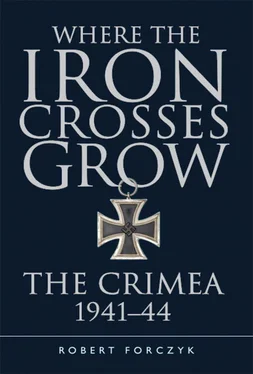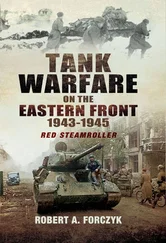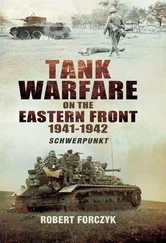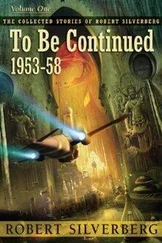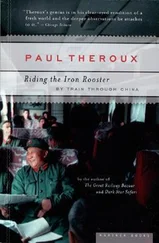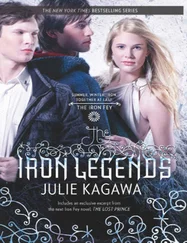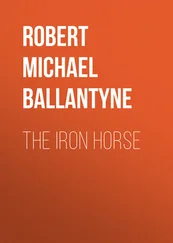Robert Forczyk
WHERE THE IRON CROSSES GROW

THE CRIMEA 1941–44
There is a distant and arid peninsula, surrounded by a dark and brooding sea, where armies and fleets traditionally came to die, like wounded animals. Beneath the surface of this soil lies fragments of the legions of Hitler and Stalin, as well as the civilians they murdered. Bits of bone, perhaps part of a jawbone or teeth, a bent German identity disk, or a moldy Soviet belt buckle, and plenty of rusty bullet casings – this is all that remains of their erstwhile martial glory in the Crimea. Here and there, the land above is still scarred with trenches or antitank ditches or a shard of barbed wire, as well as the ubiquitous shattered concrete bunkers – monuments to man’s efforts to deny the inevitable. This was the land where Iron Crosses grew and Red Stars were handed out by the boxful, where reputations were made, or lost, in a matter of hours. These generations had no Tennyson or Tolstoy to note their heroics and sacrifices, just endless lists of awards and casualties, which were then lost.
It is also a place, perhaps unique in modern warfare, where a vicious ethnic and political cleansing was carried out by both opposing sides under the guise of wartime security measures. Warfare in the Crimea was not just about the contest between opposing armies and fleets, but about remaking the human geography with a vengeance. This was a place where opposing views of a better future for their people were implemented by secret policemen armed with submachine guns and unfettered authority. It is a place where horrible crimes were covered up, so as not to tarnish the official version of history. This work is a step toward exposing the long-suppressed truth that the Nazi and Soviet regimes were not so far apart, in terms of behavior, methods, and objectives. To be sure, there were brave and extraordinary soldiers on both sides, but it is a sad truth of military history that some of the most remarkable warriors have fought for some very shabby causes. It is even more remarkable that the tragic events in the Crimea are not confined to distant memory, but are being repeated in the current era, as Russian troops have once again invaded this region in order to aggrandize the notion of a “New Russia.”
The military history of the Crimean Peninsula, which stretches back to ancient times, has been shaped by its unique geography. A natural fortress surrounded by water, the Crimea has long been regarded as a place where inferior military forces could create an impregnable bastion to hold off larger enemy armies. Attackers have always had limited options for gaining access into the Crimea, and the traditional route through the narrow Perekop Isthmus has been a tough nut to crack, irrespective of weapons technology. Yet the Crimea has also proven to be a cul-de-sac, where trapped armies were forced to fight a last stand or evacuate by sea. The degree that friendly naval forces could operate along the Black Sea littoral has ultimately determined the ability of both attackers and defenders to achieve decisive results in the Crimea.
While the Crimea was regarded as a “Russian Riviera” since the time of Catherine the Great, it was the creation of a naval base at Sevastopol that brought real strategic value to the Crimea. During the 20th century there were no less than five military campaigns in the Crimea, all of which bear striking similarities. Two of these campaigns, the German invasion of the Crimea in 1941–42 and the Soviet invasion of 1943–44, were major operations but are virtually unknown in the English-language historiography of World War II. Fighting in the Crimea was intense and often desperate, creating heroes on both sides, but their stories are largely forgotten. This book intends to correct that omission, as well as providing historical context for the current Russian military operations in the Crimea. The military history of the Crimea over the past two centuries is exceedingly complex, but presents a rich tapestry of patriots, opportunists, professional soldiers and sailors and not a few villains, all vying for control of this prestigious region, but each in turn facing victory, followed by frustration and defeat.
The Russians were drawn to the Crimea by Tatar raiding, which had swept far and wide across southern Russia since the early 16th century. The Tatars were warlike descendents of the Mongol Golden Horde and closely allied with the Ottoman Empire; they were skillful light cavalrymen and for centuries their economy in the Crimea was based upon the sale of pillaged goods and of Russian captives into slavery. The Crimean city of Caffa (later Feodosiya), became the center of a lucrative slave trade with the Ottoman Empire. In 1571, a large army of Crimean Tatars even raided Moscow and burned much of Tsar Ivan the Terrible’s capital, then took thousands of prisoners back with them. [1] Isabel de Madariaga, Ivan the Terrible: First Tsar of Russia (New Haven: Yale University Press, 2006), pp. 265–266.
The Crimean Tatars, who held a position of military advantage, also demanded tribute from Ivan the Terrible and were intent upon seizing more Russian land. Although Ivan the Terrible’s army inflicted a severe defeat upon the Crimean Tatars just 40 miles south of Moscow in 1572, this was only a temporary reverse, and Tatar raiders continued to threaten the outskirts of Moscow for another 60 years.
The remote Crimean Peninsula was a natural fortress for Tatar raiding forces, since the only practical invasion route was through the narrow neck of the Perekop Isthmus, just 5½ miles wide. The Crimean Tatars used their plentiful slave labor to build a large fort at Perekop, then supplemented it with a wall across the Perekop Isthmus and dug a 72ft wide and 39ft deep moat in front of it. It was a very strong defensive position, supported by artillery and several forts. Furthermore, the area around the Perekop Isthmus was treeless and devoid of fresh water, which made it difficult for an attacking force to remain long enough to mount a deliberate attack. There were two other lesser land routes into the Crimea, but each was fraught with difficulty. East of Perekop, the Sivash was a shallow, marshy area that was not really sea or land. It could be crossed at two locations – at the even narrower Chongar Peninsula, just half a mile wide, or the 75-mile long Arabat Spit, which was little more than a sandbar. Both routes were easily blocked by small forces; the Tatars built fieldworks at Chongar and a large stone fort to block the southern end of the Arabat Spit. In military terms, the only practical alternative to an assault on the Perekop Isthmus was to land at Kerch, on the eastern end of the Crimea, but Ottoman naval superiority on the Black Sea made this infeasible for two centuries.
Russia, devastated by famine that eliminated nearly one-third of its population during 1601–03, could not immediately respond to aggression from the Crimean Tatars. It was not until May 1689 that Prince Vasily Golitsyn was able to approach Perekop with an army of 117,000 Russian soldiers and plenty of artillery. However, Russian armies lacked the logistical support to operate in such remote, inhospitable terrain, and Golitsyn was compelled to fall back empty-handed. [2] Robert K. Massie, Peter the Great: His Life and World (New York: Ballantine Books, 1980), pp. 91–92.
Tatar raiding from their Crimean stronghold continued, with 15,000 Russian captives taken in 1693 alone. [3] Massie, Peter the Great: His Life and World , p. 142.
Russian tsars became increasingly incensed about eliminating this persistent threat once and for all, but decades passed with no success. Recognizing the deficiency of Russian military training, the tsars were compelled to import foreign military officers to improve the efficiency of Russian armies. One such officer, the German Count Burkhard Christoph von Münnich, led a 62,000-man Russian army in May 1736 that succeeded in storming the heretofore impregnable Tatar Wall at Perekop by use of deception and a night assault. Münnich conducted a feint against one end of the wall, which attracted Tatar attention, while his main body assaulted the other end. The first Russian soldier to reach the top of the Tatar Wall was a 13-year-old nobleman named Vasily Dolgorukov, whom Münnich awarded a field commission. Thereafter, Münnich’s army spread out across the Crimea, destroying a number of towns, before disease and lack of supplies forced a withdrawal. [4] Thomas Milner, The Crimea: Its Ancient and Modern History: the Khans, the Sultans, and the Czars (London: Longman, Brown, Green and Longman, 1855), pp. 200–201.
Читать дальше
